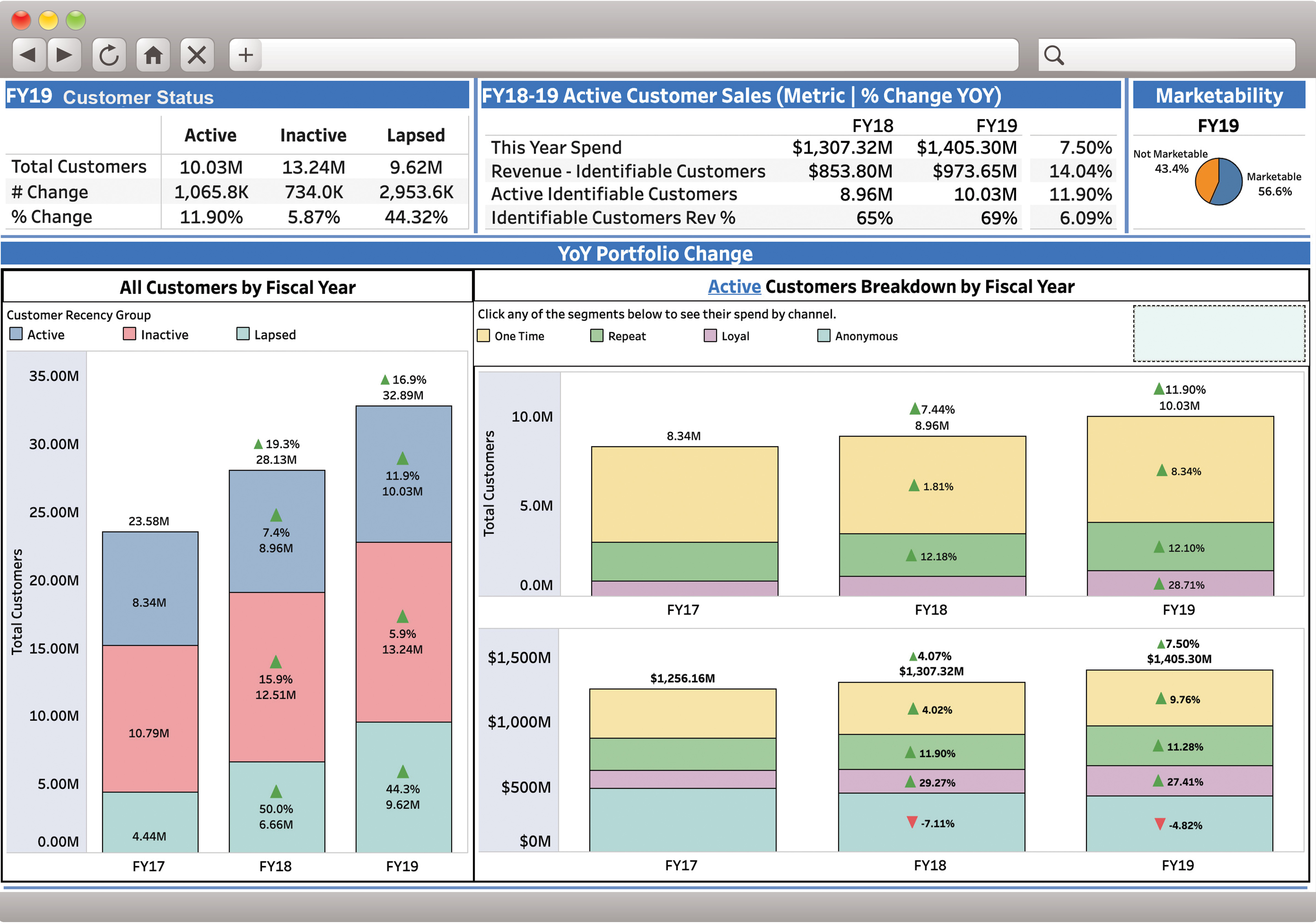
We are living in the age of Big Data, where 2.5 quintillion bytes of data are created each day. Data comes in every form and tells us everything we need to know about customer shopping habits and preferences, and retail marketers can and should use this data to create a better shopping experience. Customer data allows retailers to see a customer’s browsing and purchase history, send personalized emails, or check out a customer’s loyalty rewards, just by collecting information as the customer shops.
To make the best use of your data, it needs to be organized and analyzed to fit your company’s business goals. Below are four tips to make your customer data work for you:
- Stick to the KPIs – Your Key Performance Indicators help you measure your progress against your company’s goals and objectives. Find data points that will help you track your KPIs, and focus on analyzing those. There is so much data, and oftentimes marketers don’t know where to start. It can be overwhelming to sift through all that data to find what is most important for your business. By integrating and connecting disparate data sources, there is the ability to learn nearly everything there is to know about your customer base, but doing so will send you down a data rabbit-hole. You will lose focus on achieving your business goals. Stick to the KPIs and touchpoints that will help you increase your customer base, delight your current customers, and create incremental revenue.
- Eliminate data silos – As stated above, integrating disparate data sources can help you learn nearly everything there is to know about your customer base. While this may feel overwhelming, it is the only way to get a 360-view of your customer to understand them and their shopping habits. Let’s say you have a customer, Janice, who purchased a purse in-store after she read an email advertising the purse. Unless you combine your email data with your POS data, you have no way of knowing that she came in the store because she saw the email. By eliminating your data silos, you can better ascertain marketing attribution, and connect the dots between all your channels.
- Get as granular as possible – Typically when we think of data, we think about it in the cumulative sense. While this is important for measuring and keeping track of some KPIs, you also need to be able to see the data at the individual customer level. How much did Janice spend on her purse? Did she buy anything else? What is her average spend when she comes into your store? By getting personal with your data, you can see how overall trends are impacting customers on an individual level. And when you know how the individual customer behaves, you can target them with relevant products and offers.
- Have easy-to-read and informative dashboards – Pretend for a moment that all your customer information is stored in a spreadsheet. Everything about purchase history, average spend, customer interactions, future value, and more is laid out in columns and rows. And there are thousands of customers, creating millions of cells of numbers that on their own, don’t mean anything. Sounds painful, right? Obviously, this is an extreme and rare case, but it highlights the need for clean, easy-to-use dashboards that measure the right KPIs for your business. When looking at your analytical dashboards, you should be able to quickly see trends, highlights, and areas to improve. Not only will it make the data analyst’s job easier, it will be easier to present to interested stakeholders that may not be as data-inclined.
As technology and the internet of things increases, customers will leave more and more data trails for retailers to track. By getting a grasp on your customer analytics now, adding in more touchpoints will be easy and keep you ahead of the game in the age of Big Data.



